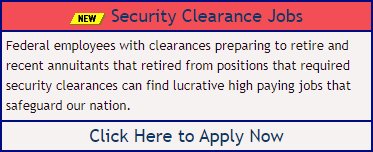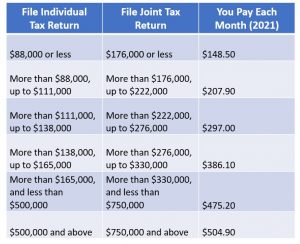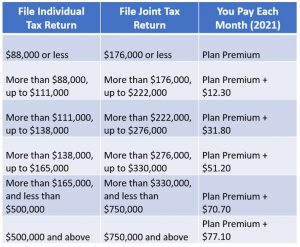Posted on Friday, 6th August 2021 by Dennis Damp
 Print This Post
Print This Post
Your annuity, a defined benefit retirement plan, is determined by the retirement system that you are in, either the Federal Employees Retirement System (FERS) or the Civil Service Retirement System (CSRS). Approximately 2 percent of current federal employees are under the old CSRS / CSRS Offset system, the FERS program was established in the 1980s.

Annuities are based on years of service, unused sick leave, your survivor annuity election, and the benefits you carry into retirement. All FERS and some CSRS retirees are eligible to collect a social security benefit. Thrift Plan (TSP) participants can also add additional income through various withdrawal options including annuitizing their THRIFT savings. FERS employees who retire After their Minimum Retirement Age (MRA) with 30 years of service will receive a Special Retirement Supplement which is paid as an annuity until you reach age 62 and become eligible for Social Security.
All in all, a very generous retirement system for all who take steps to build their retirement accounts, such as maximizing your TSP contributions, and taking advantage of the catch-up contributions for those over 50. Click on the links listed above to estimate your annuity for both retirement systems.
What to Expect After You Leave
Your first retirement check should arrive on or about the first of the month following your separation. For example, if you retire by no later than the 3rd of January your first check should arrive on or about the first of February. You will receive approximately 70 to 80% of your estimated annuity until OPM verifies and processes your retirement application. When I retired from federal service, my first full annuity check was deposited in my account three months after leaving.
Typically, the leave that you sell back will be paid within 6 to 8 weeks in a separate check. When you start receiving your regular retirement check OPM will send you a highly informative pamphlet that outlines your personal retirement plan including benefit elections, general guidance, contact information, your personal “CSA” or “CSF” retirement account number, and survivor’s information. OPM sends out updates to this pamphlet as changes occur. Keep this booklet with your estate plan and make sure it is easily accessible for your spouse and/or loved ones. You MUST use your retirement number for all correspondence with OPM.
After retirement there are a number of ways your income can increase. First and foremost is the annual Cost of Living Adjustment (COLA). This isn’t a given, since 1999 there were three years where COLAs weren’t paid, 2010, 2011, and 2016 due to a negative CPI. However, COLAs ranged from a low of .3 percent in 2017 to a high of 4.8 percent in 2009. The COLA for 2022 is expected to be approximately 5 to 6 percent due to significant inflation resulting from excessive government spending and other pandemic related factors over the past year.
Another option to increase retirement income is to delay Social Security benefits. Your benefit increases substantially if you wait to file for benefits until your full retirement age or age 70. The benefit of waiting until age 70 is that for each year you delay applying for Social Security beyond your full retirement age, your benefit increases by 8%! Plus, your Social Security benefit continues to grow if you earn additional income during this time.
Many work in retirement to supplement their retirement income. There are hiring signs at most establishments these days and the starting pay is often $15 or more an hour to attract workers. Federal retirees can work at any private sector job without impacting their annuity. However, if you return to the federal sector as a rehired annuitant, your pay will be reduced by the amount of your annuity in most cases.
Request a Federal Retirement Report
Retirement planning specialists provide a comprehensive Federal Retirement Report™ including annuity projections, expenditures verses income, with a complete benefits analysis. This comprehensive 27-page benefits summary will help you plan your retirement.
Request Your Personalized Federal Retirement Report™ Today
Find answers to your questions: The best time to retire, retirement income vs expenditures, FEGLI options and costs, TSP risks and withdrawal strategies, and other relevant topics. Determine what benefits to carry into retirement and their advantages. You will also have the opportunity to set up a personal one-on-one meeting with a CERTIFIED FINANCIAL PLANNER.
Helpful Retirement Planning Tools
- Retirement Planning For Federal Employees & Annuitant
- Budget Worksheet – Determine your pre and post retirement total income and expenses
- TSP Guidance
- Medicare Guide
- Social Security Guide
- Master Retiree Contact List (Important contact numbers and information)
- 2021 Leave and Schedule Chart (Use this chart to set target retirement dates.)
- Annuity Calculator (FREE Excel chart estimates annuity growth)
Disclaimer: The information provided may not cover all aspect of unique or special circumstances, federal regulations, medical procedures, and benefit information are subject to change. To ensure the accuracy of this information, contact relevant parties for assistance including OPM’s retirement center. Over time, various dynamic economic factors relied upon as a basis for this article may change. The advice and strategies contained herein may not be suitable for your situation and this service is not affiliated with OPM or any federal entity. You should consult with a financial, medical or human resource professional where appropriate. Neither the publisher or author shall be liable for any loss or any other commercial damages, including but not limited to special, incidental, consequential, or other damages.
Posted in ANNUITIES / ELIGIBILITY, BENEFITS / INSURANCE, EMPLOYMENT OPTIONS, ESTATE PLANNING, FINANCE / TIP, RETIREMENT CONCERNS, SOCIAL SECURITY / MEDICARE, SURVIVOR INFORMATION
Comments (0)|  Print This Post
Print This Post








